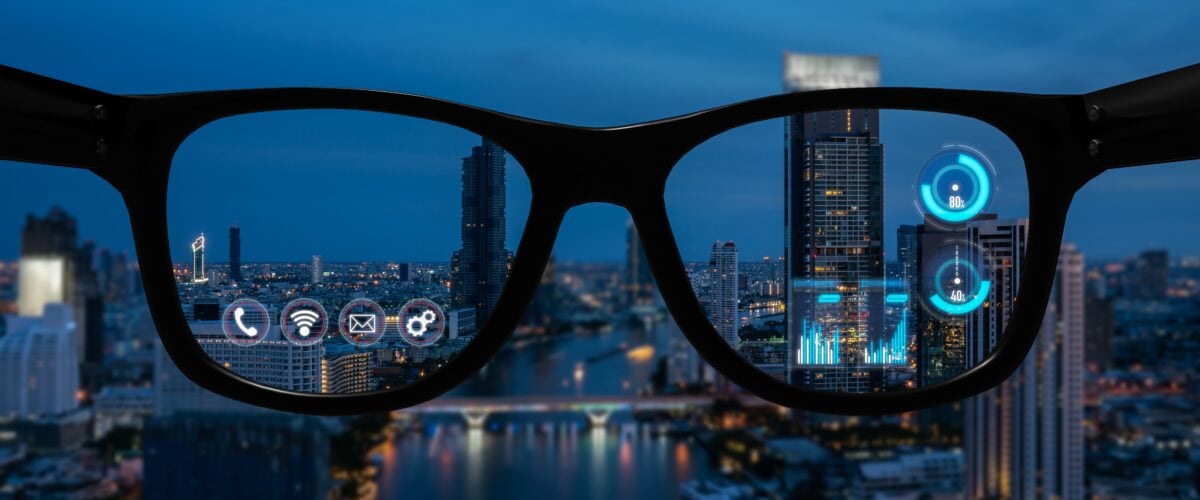TLDRs;
- Amazon unveils AI-powered smart glasses to help delivery drivers navigate routes and complete deliveries more efficiently.
- The wearable provides turn-by-turn directions, package info, and hazard alerts directly in the driver’s field of view.
- Early testers praised comfort and usability, though Amazon hasn’t revealed full rollout plans or global reach.
- Privacy and compliance tools may be needed as AR glasses introduce always-on cameras in logistics settings.
Amazon is expanding its use of artificial intelligence in logistics with the development of AI-powered smart glasses designed for its Delivery Associates.
The wearable device aims to make the delivery process more seamless, combining computer vision, augmented reality (AR), and real-time data to enhance driver performance.
The smart glasses overlay key delivery details such as package information, directions, and hazard alerts into the driver’s field of view. This hands-free approach means drivers no longer need to rely on their phones for navigation or package scanning. Instead, they can view delivery tasks directly through the AR interface, improving both speed and situational awareness during routes.
Amazon said hundreds of its Delivery Associates across North America have already tested early versions of the glasses, providing detailed feedback on comfort, weight, and display visibility.
Designed for Efficiency and Safety
According to Amazon, the glasses were built with ergonomic and safety features tailored for high-demand delivery work. Each pair includes a swappable battery for long shifts, a compact controller for menu navigation, and a dedicated emergency button for quick support. The glasses can also accommodate prescription and transitional lenses, ensuring compatibility for drivers with varying vision needs.
The company’s broader investment in logistics technology reflects a long-term vision to streamline operations. Since 2018, Amazon has invested more than US$16.7 billion in its Delivery Service Partner (DSP) program—supporting independent delivery companies and improving last-mile logistics.
The new glasses fit into that effort by offering a digital assistant that blends AI-driven awareness with real-world functionality, such as identifying obstacles, scanning packages automatically, and potentially verifying deliveries in real time.
Pilot Program Still in Early Stages
While the pilot project is underway, Amazon has not disclosed the scale or timeline for a wider rollout. The company is still collecting data and optimizing the system for reliability and performance before launching it globally.
Industry observers note that Amazon’s consumer-focused AR glasses, reportedly codenamed Jayhawk, may not launch until 2026 or 2027. This suggests that enterprise-focused wearables like the delivery glasses could remain in extended testing phases for now.
As of this phase, only North American drivers are participating in the pilot. No other regions have been confirmed, leaving questions about the program’s international expansion and support logistics unanswered.
Privacy and Compliance Challenges Ahead
While the technology promises efficiency, it also raises privacy and compliance concerns, particularly because the glasses feature an always-on camera.
Such systems can trigger privacy laws like the Illinois Biometric Information Privacy Act (BIPA) and the California Privacy Rights Act (CPRA) if biometric data from images is stored or analyzed.
Experts suggest companies deploying AR wearables in logistics could adopt auto-redaction tools, consent workflows, and data retention controls to comply with state and federal regulations. These measures may soon become standard for fleets introducing camera-equipped wearables into daily operations.
Looking Toward the Future
Amazon’s AI glasses mark a significant step in augmenting human delivery workers with smart, context-aware tools. By integrating AR navigation and AI vision into a lightweight headset, Amazon aims to redefine how last-mile logistics operate, boosting speed, accuracy, and safety on the road.
Yet, questions remain about cost, scalability, and worker privacy. Until Amazon discloses rollout timelines or performance metrics, the technology’s broader impact will remain speculative. Still, the pilot hints at a near future where delivery drivers are guided not by handheld screens, but by intelligent, wearable assistants that see what they see.





